
Editor’s note: An emergent curriculum builds on the interests of students, developing as they learn. Rather than being entirely set in advance, emergent curricula grow naturally from the chosen environment (indoor or outdoor), the curiosity of children, and the instructor’s knowledge and experience.
A good walk stimulates both mind and body and provides the invigorating theme and energizing structure of Hey Kids! Out the Door, Let’s Explore by Rhoda Redleaf. Walking is free, easy, and can be done almost anywhere. The walks are grouped into three categories: Nature Walks, Community Walks, and Concept Walks. Nature Walks include Cold Day, Windy Day, Trees Walk, and more. Community Walks can be Hardware Store Walk, Market Walk, or other walks in the neighborhood. Concept Walks might be What’s It Made Of? Walk, Color Walk, Light and Shadow Walk, as examples. Redleaf includes appendices to help teachers organize the excursions.
At the early childhood level, Rhoda Redleaf’s approach is emergent curriculum, with an emphasis on human relationships and language development while exploring common everyday experiences that are engaging and meaningful to children. “The most important learning task of young children remains constructing their own knowledge to make sense of the world. You, the adults in their world, provide the bridges from the unknown to the known,” writes Redleaf.
The book is full of ideas to explore and to build on, involving flexibility and creativity on the part of the adults as well as an openness to seeing where the learning takes the children. Both adults and children take initiative and make decisions. Children’s thinking and learning are documented with suggested activities related to the walks. Hey Kids! Out the Door, Let’s Explore is a valuable resource for teachers with both preschool and primary school children.
Published in the November 2017 Leaflet Volume 4, Issue 11

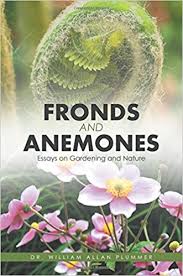 With fronds like these, who needs anemones? This old horticultural quip inspired the title Fronds and Anemones, a book of essays by William Allan Plummer. In his preface he warns, “I am an incorrigible punster, for which I make no apology.”
With fronds like these, who needs anemones? This old horticultural quip inspired the title Fronds and Anemones, a book of essays by William Allan Plummer. In his preface he warns, “I am an incorrigible punster, for which I make no apology.”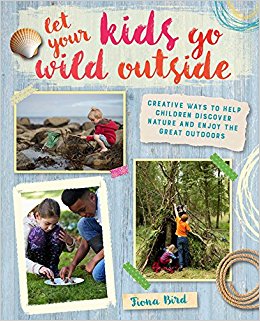 Fiona Bird is a true champion of appreciating the wild outside world. Her work inspires deeply breathing fresh air, opening up the mind, and enjoying the excitement and mystery of the world we live in, starting early in life. Let Your Kids Go Wild Outside: Creative Ways to Help Children Discover Nature and Enjoy the Great Outdoors encourages children to appreciate their countryside. This Scottish author writes with strong feeling as a mother of six: “With encouragement a child will develop a personal relationship with our natural world, one that stretches way beyond facts assimilated in a classroom.”
Fiona Bird is a true champion of appreciating the wild outside world. Her work inspires deeply breathing fresh air, opening up the mind, and enjoying the excitement and mystery of the world we live in, starting early in life. Let Your Kids Go Wild Outside: Creative Ways to Help Children Discover Nature and Enjoy the Great Outdoors encourages children to appreciate their countryside. This Scottish author writes with strong feeling as a mother of six: “With encouragement a child will develop a personal relationship with our natural world, one that stretches way beyond facts assimilated in a classroom.”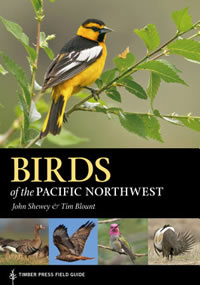 The popularity of birding in our region sparked the release of two new birding books with nearly identical titles by major regional publishers. “Birds of the Pacific Northwest: A Photographic Guide” by Tom Aversa, Richard Cannings, and Hal Opperman was published in 2016 by the Seattle Audubon Society and the University of Washington Press. In 2017, Timber Press continued their Field Guide series with this book, “Birds of the Pacific Northwest,” by John Shewey and Tim Blount.
The popularity of birding in our region sparked the release of two new birding books with nearly identical titles by major regional publishers. “Birds of the Pacific Northwest: A Photographic Guide” by Tom Aversa, Richard Cannings, and Hal Opperman was published in 2016 by the Seattle Audubon Society and the University of Washington Press. In 2017, Timber Press continued their Field Guide series with this book, “Birds of the Pacific Northwest,” by John Shewey and Tim Blount. The popularity of birding in our region sparked the release of two new birding books with nearly identical titles by major regional publishers. This book was published in 2016 by the Seattle Audubon Society and the University of Washington Press. In 2017, Timber Press continued their Field Guide series with “Birds of the Pacific Northwest,” by John Shewey and Tim Blount.
The popularity of birding in our region sparked the release of two new birding books with nearly identical titles by major regional publishers. This book was published in 2016 by the Seattle Audubon Society and the University of Washington Press. In 2017, Timber Press continued their Field Guide series with “Birds of the Pacific Northwest,” by John Shewey and Tim Blount.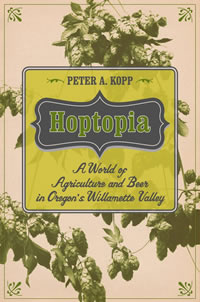 “Hoptopia” is the intriguing name of a well-researched and documented new book by Peter Kopp that tells the history of growing hops, especially in the Willamette Valley of Oregon. To set the stage, the author reviews the natural history of hops, including Humulus lupulus, a wide spread species throughout much of the north temperate world, but that is not found in our region.
“Hoptopia” is the intriguing name of a well-researched and documented new book by Peter Kopp that tells the history of growing hops, especially in the Willamette Valley of Oregon. To set the stage, the author reviews the natural history of hops, including Humulus lupulus, a wide spread species throughout much of the north temperate world, but that is not found in our region.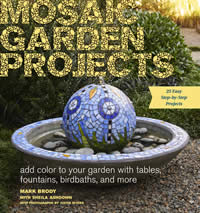 “Mosaic and garden design have similar characteristics. They are each made of an assembly of pieces laid out in a certain way.” This is the premise of primary author Mark Brody in “Mosaic Garden Projects,” co-written with Sheila Ashdown. Both authors, along with photographer Justin Myers, whose work is a critical part of this book, are Portland residents.
“Mosaic and garden design have similar characteristics. They are each made of an assembly of pieces laid out in a certain way.” This is the premise of primary author Mark Brody in “Mosaic Garden Projects,” co-written with Sheila Ashdown. Both authors, along with photographer Justin Myers, whose work is a critical part of this book, are Portland residents. “Florets Farm’s Cut Flower Garden” is an excellent handbook to creating and running a very successful cut flower business on the model of Floret Farm in Washington’s Skagit Valley. However, if your goals are not quite so ambitious, there is still a lot of advice here for creating a cutting patch in your own garden and using the bounty for filling vases and many other purposes.
“Florets Farm’s Cut Flower Garden” is an excellent handbook to creating and running a very successful cut flower business on the model of Floret Farm in Washington’s Skagit Valley. However, if your goals are not quite so ambitious, there is still a lot of advice here for creating a cutting patch in your own garden and using the bounty for filling vases and many other purposes.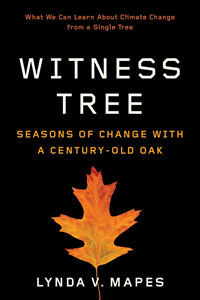 How would it be to spend a whole year observing a forest, the changing seasons and all the beings – plants and animals – that lived there. This is exactly what Lynda Mapes, a science reporter for “The Seattle Times,” decided to find out. She lived on the edge of the Harvard Forest, a 3,000 acre managed research forest in Petersham, Massachusetts, over 60 miles west of the main Harvard campus. “The Witness Tree” is the story of this undertaking.
How would it be to spend a whole year observing a forest, the changing seasons and all the beings – plants and animals – that lived there. This is exactly what Lynda Mapes, a science reporter for “The Seattle Times,” decided to find out. She lived on the edge of the Harvard Forest, a 3,000 acre managed research forest in Petersham, Massachusetts, over 60 miles west of the main Harvard campus. “The Witness Tree” is the story of this undertaking.